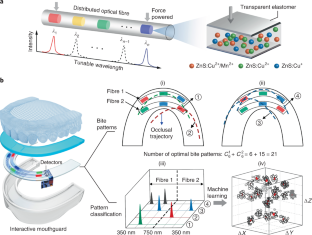空気中の化学物質が紛れもない生物学的シグナルを送る Airborne chemical sends unmistakable biological signal
2022-10-10 カリフォルニア大学リバーサイド校(UCR)
メチル化ガスの1つである臭化メチルは、太陽系外の生命を探索する際に従来から対象とされてきた他のガスと比較して、いくつかの利点を持っている。
1つは、臭化メチルは従来の生物起源ガスに比べて大気中に存在する時間が短いということだ。
もう一つの利点は 臭化メチルは、微生物が作るメタンのようなガスよりも、生物が作ったものである可能性が高い.。しかし、火山などの地質学的なプロセスによって生成された可能性もある。
さらに、臭化メチルは、「同類」の生物指標である塩化メチルの近くで光を吸収するため、両者、そして生命の存在を容易に発見することができる。
<関連情報>
- https://news.ucr.edu/articles/2022/10/10/broccoli-gas-better-way-find-life-space
- https://iopscience.iop.org/article/10.3847/1538-4357/ac8799
メチル化されたバイオシグネチャの代替物質。I. キャップストーンバイオシグネチャーである臭化メチル Alternative Methylated Biosignatures. I. Methyl Bromide, a Capstone Biosignature
Michaela Leung, Edward W. Schwieterman,Mary N. Parenteau and Thomas J. Fauchez
Astrophysical Journal Published 2022 October 10
DOIhttps://doi.org/10.3847/1538-4357/ac8799

Abstract
The first potential exoplanetary biosignature detections are likely to be ambiguous due to the potential for false positives: abiotic planetary processes that produce observables similar to those anticipated from a global biosphere. Here we propose a class of methylated gases as corroborative “capstone” biosignatures. Capstone biosignatures are metabolic products that may be less immediately detectable, but have substantially lower false-positive potential, and can thus serve as confirmation for a primary biosignature such as O2. CH3Cl has previously been established as a biosignature candidate, and other halomethane gases such as CH3Br and CH3I have similar potential. These gases absorb in the mid-infrared at wavelengths that are likely to be captured while observing primary biosignatures such as O3 or CH4. We quantitatively explore CH3Br as a new capstone biosignature through photochemical and spectral modeling of Earthlike planets orbiting FGKM stellar hosts. We also reexamine the biosignature potential of CH3Cl over the same set of parameters using our updated model. We show that CH3Cl and CH3Br can build up to relatively high levels in M dwarf environments and analyze synthetic spectra of TRAPPIST-1e. Our results suggest that there is a coadditive spectral effect from multiple CH3X gases in an atmosphere, leading to an increased signal-to-noise and greater ability to detect a methylated gas feature. These capstone biosignatures are plausibly detectable in exoplanetary atmospheres, have low false-positive potential, and would provide strong evidence for life in conjunction with other well-established biosignature candidates.



